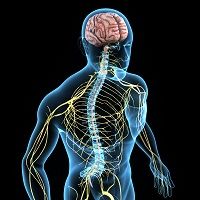Article
Simply Crossing Your Fingers Can Activate Pain in the Brain
Author(s):
Although the relationship between pain and spatial representation is unclear, a study published in Current Biology took steps in understanding how pain is activated in the brain and raised the possibility of reducing the sensation.

Although the relationship between pain and spatial representation is unclear, a study published in Current Biology took steps in understanding how pain is activated in the brain and raised the possibility of reducing the sensation.
The thermal grill illusion (TGI) — the sensory illusion that alternating warm and cool creates a burning type pain – was the basis for the three University College London authors to study the nerve pathways to the brain.
"Cold normally inhibits pain, so inhibiting the input from the cold stimulus produces an increase in pain signals," Co-Lead Author Elisa Ferrè said in a news release. "It's like two minuses making a plus."
The team applied various warm or cool temperature patterns to the index, middle, and ring fingers. In doings so, the researchers found that the spatial arrangement of temperatures decided if there was a burning sensation in the middle finger or not.
"When the cold finger was positioned in between the two warm fingers, it felt burningly hot. When the cold finger was moved to an outside position, the burning sensation was reduced,” Ferrè said. “The brain seemed to use the spatial arrangement of all three stimuli to produce the burning heat sensation on just one finger."
The researchers applied these results to make a connection to how pain makes its way to the brain.
"Interactions like these may contribute to the astonishing variability of pain," Senior Author Patrick Haggard said. "Many people suffer from chronic pain, and the level of pain experienced can be higher than would be expected from actual tissue damage.”
While the stimulus may activate the brain’s pain systems, there is not any actual tissue damage.
“Our research is basic laboratory science, but it raises the interesting possibility that pain levels could be manipulated by applying additional stimuli, and by moving one part of the body relative to others,” Haggard said.“Changing the spatial pattern of interacting inputs could have an effect on the brain pathways that underlie pain perception."





